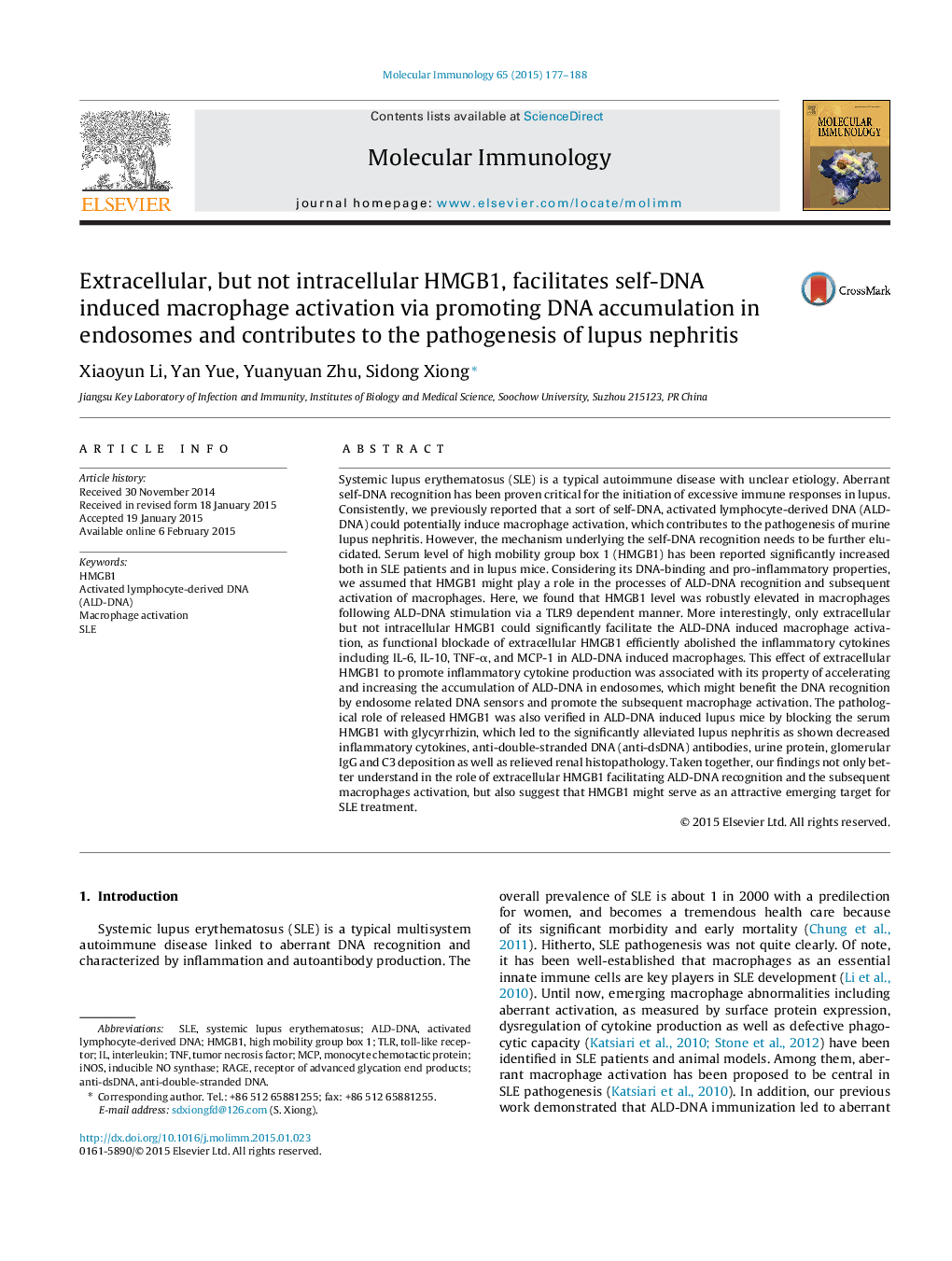| کد مقاله | کد نشریه | سال انتشار | مقاله انگلیسی | نسخه تمام متن |
|---|---|---|---|---|
| 2830639 | 1163747 | 2015 | 12 صفحه PDF | دانلود رایگان |

• ALD-DNA stimulation induces TLR9-depedent HMGB1 release in macrophages.
• Extracellular HMGB1 is critical to ALD-DNA-induced macrophage activation.
• Extracellular HMGB1 facilitates the recruitment of ALD-DNA into the endosomes.
Systemic lupus erythematosus (SLE) is a typical autoimmune disease with unclear etiology. Aberrant self-DNA recognition has been proven critical for the initiation of excessive immune responses in lupus. Consistently, we previously reported that a sort of self-DNA, activated lymphocyte-derived DNA (ALD-DNA) could potentially induce macrophage activation, which contributes to the pathogenesis of murine lupus nephritis. However, the mechanism underlying the self-DNA recognition needs to be further elucidated. Serum level of high mobility group box 1 (HMGB1) has been reported significantly increased both in SLE patients and in lupus mice. Considering its DNA-binding and pro-inflammatory properties, we assumed that HMGB1 might play a role in the processes of ALD-DNA recognition and subsequent activation of macrophages. Here, we found that HMGB1 level was robustly elevated in macrophages following ALD-DNA stimulation via a TLR9 dependent manner. More interestingly, only extracellular but not intracellular HMGB1 could significantly facilitate the ALD-DNA induced macrophage activation, as functional blockade of extracellular HMGB1 efficiently abolished the inflammatory cytokines including IL-6, IL-10, TNF-α, and MCP-1 in ALD-DNA induced macrophages. This effect of extracellular HMGB1 to promote inflammatory cytokine production was associated with its property of accelerating and increasing the accumulation of ALD-DNA in endosomes, which might benefit the DNA recognition by endosome related DNA sensors and promote the subsequent macrophage activation. The pathological role of released HMGB1 was also verified in ALD-DNA induced lupus mice by blocking the serum HMGB1 with glycyrrhizin, which led to the significantly alleviated lupus nephritis as shown decreased inflammatory cytokines, anti-double-stranded DNA (anti-dsDNA) antibodies, urine protein, glomerular IgG and C3 deposition as well as relieved renal histopathology. Taken together, our findings not only better understand in the role of extracellular HMGB1 facilitating ALD-DNA recognition and the subsequent macrophages activation, but also suggest that HMGB1 might serve as an attractive emerging target for SLE treatment.
Journal: Molecular Immunology - Volume 65, Issue 1, May 2015, Pages 177–188